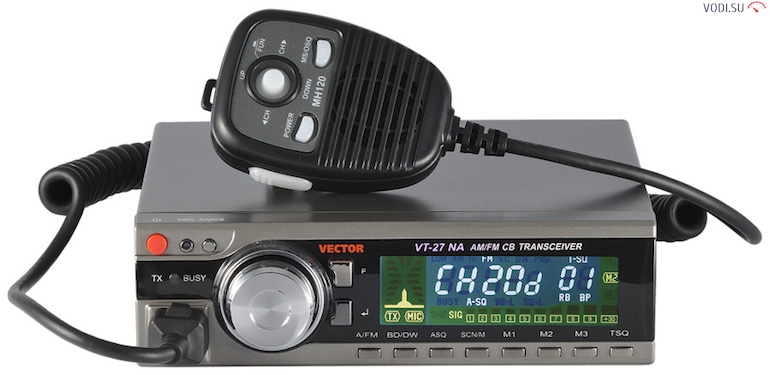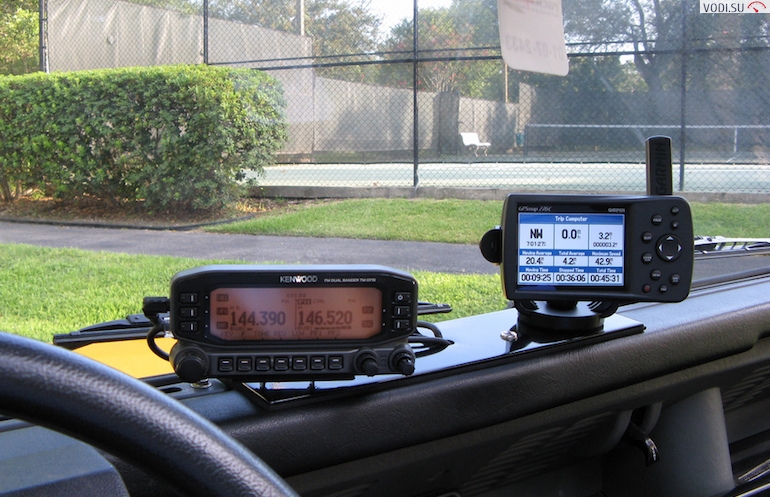
How to choose a car radio? For truckers, taxi drivers
Any truck driver knows how important it is to keep in touch with the outside world during the trip. Unfortunately, mobile communications do not pull well everywhere - it is enough to drive away from the city and the number of signal strength bars decreases catastrophically.
Popular today GLONASS or GPS trackers make it possible to send an alarm signal, but they are suitable for communication only in the coverage area of GSM networks.
That is why drivers prefer car radios.
The advantages of its installation are as follows:
- communication is free - you do not need to pay according to the tariffs of a mobile operator or for packet data transfer via GPRS;
- you can easily arrange real conferences - a truck driver hears everyone who is within a radius of 10-20 kilometers, can keep up a conversation, report various data, for example, about traffic police posts;
- a great way to communicate for taxi drivers and dispatchers;
- signal quality does not depend on weather conditions.
How to choose an inexpensive and reliable radio in the car? Vodi.su will try to figure it out.

Main characteristics of radio stations
The walkie-talkie in the car must support the Citizen's Band or simply CB. CB is a dedicated 27 MHz band. No licensing is required to communicate on these waves. In principle, all car radios are designed for a frequency range from 26 to 695 Hertz or even more.
Important Features:
- antenna;
- the presence of a noise reduction function (AQL) - filtering extraneous interference;
- number of channels or frequency grid - 80 or more channels;
- modulation - transition between AM / FM frequencies;
- frequency grids C and D - each grid contains 40 channels;
- power — signal propagation radius;
- receiver sensitivity;
- operating temperatures.
Let's take a look at some of these options.
Antenna
Antennas come in three types of mounting:
- on a magnet - they are easily attached, but at the same time they scratch the paintwork of the roof, also this type of antenna does not make it possible to use the car body as a signal amplifier, therefore additional metal elements are required to connect to the body;
- on the mount - mounted on the bumper, doors, drain, contact with the body and signal amplification is provided;
- mortise - the best option, but you have to make a hole in the body for installation.
Beginners usually choose one of the first two options, and they are also the cheapest.

Noise suppression
A useful feature, without which your head would become square in a few hours. Squelch suppresses the noise threshold as much as possible, blocking extraneous sounds in the pauses between signal reception.
In principle, everyone heard how taxi drivers' walkie-talkies work: she is silent, and as soon as a signal arrives, a hiss is heard and the dispatcher's voice is heard. The squelch threshold can be adjusted as desired.
Frequencies, channel grids, modulation
The more frequencies you can listen to, the better. For example, you can listen to the conversations that the owners of vintage radiotelephones have.
The working range is CBS, respectively, it is on it that you can communicate with other drivers or dispatchers. AM/FM modulation allows you to switch between medium and ultra-short waves.
At FM frequencies, special channels are allocated within and around cities, for example, the 15th or 19th channels.
Outside the city, truckers conduct their conversations on AM, such waves propagate over a greater distance, and therefore less power is required.
Channel grids are specially prepared ranges. In the European grid, they end in five (21, 175 Hertz), and in Russia, in zero - 21, 275, and so on. It will be easier for you to search. Each grid has 21 channels.

Technical specifications
In this case, we are talking about power, operating voltage, temperature range, receiver sensitivity.
The more power, the more radius you can cover. The optimal power is 8-10 watts, your signal can spread within a radius of 10-20 km. Amplifiers up to 100 watts are also sold, but they consume a lot of energy, and they require permission.
The sensitivity is directly related to the antenna. Operating voltage - 12 (cars) or 24 (trucks) Volts. On sale you can also find adapters for 12/24 Volts.
Temperature - at what temperature the radio will work well. This parameter is important for those who go on flights in the northern regions. For middle latitudes, this characteristic is not of decisive importance.
Selecting a radio station
The range today is quite wide, you can find devices at a price of four thousand, up to forty and more.
Inexpensive copies for 4-5 thousand rubles have all the necessary characteristics:
- compact, light weight;
- All fasteners are included.
- magnetic antenna (may be sold separately);
- works in the Russian and European network of channels;
- CB.
It is clear that problems can be with noise reduction, low power, poor receiver sensitivity. For the city, this is not the best option, as you will simply go deaf from the hiss.
More expensive walkie-talkies are distinguished by advanced functionality, additional settings, convenience and ease of use. They are purchased, as a rule, for professional use, for example, taxi drivers, employees of various delivery services, truckers. The cost of such devices ranges from 20 to 40 thousand.
Loading…
